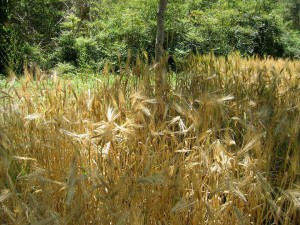Farmers in Montana and Idaho should have been harvesting their barley in the past two weeks. However, heavy rains have caused delays. In addition, the rains have been causing barley to sprout in the field. As little as 2% sprouted kernels will usually lead maltsters to reject a crop of barley, but in some parts of Montana, sprouting has exceeded 50%.
Much of the rejected malting barley crop could be sold as feed grain. But with prices already very low for feed, this is not much help for farmers with damaged crops.
In North Dakota — third in US barley production, after Montana and Idaho — rain is delaying the harvest, too. It is possible that US maltsters may try to buy barley from Canada, but Canada’s harvest is also being delayed by rain.
Some ag sources are calling the losses in some areas “catastrophic”. And, with the typical restraint seen in many on-line news sources, some are already prophesying a “beerpocalypse.” A note on the Probrewer forum, however, gives a slightly more sober assessment. Given that there are barley stocks left over from last year’s good crop, and at least some barley can likely be purchased from Canada (or perhaps elsewhere), the worst case scenarios are unlikely to unfold. A shortage of malt, for example, is unlikely. However, be prepared for malt and beer prices to go up.
Barley In the US
In the US, Montana and Idaho are the top barley-producing states, followed by North Dakota. Growers in Montana and Idaho mostly grow 2-row malting varieties of barley such as AC Metcalfe, Conrad, and a couple “Moravian” varieties bred by Coors. In North Dakota and Minnesota, most barley growers raise 6-row malting barley varieties such as Tradition, Lacey, and Robust.
US farmers growing barley do so under contract to maltsters. There is no longer much of a “spot” market for barley due to economic incentives for farmers to grow corn or soy and the fact that, if their barley gets rejected for malting, their is no longer much of a feed market. With US barley production at historic lows, there is not a lot of “wiggle room” when it comes to large-scale crop failure. However, not every farm in Montana and Idaho is likely to be seeing the extreme losses that are occurring the worst-hit regions, and it will take some time before the scope of the problem can be ascertained.
The Rain on the Plains Has Fallen Mainly on the Grains
I’ve reached out to a few US maltsters for their comments on the impact of these losses and will post updates to this story as needed.
—
Related articles


Speak Your Mind